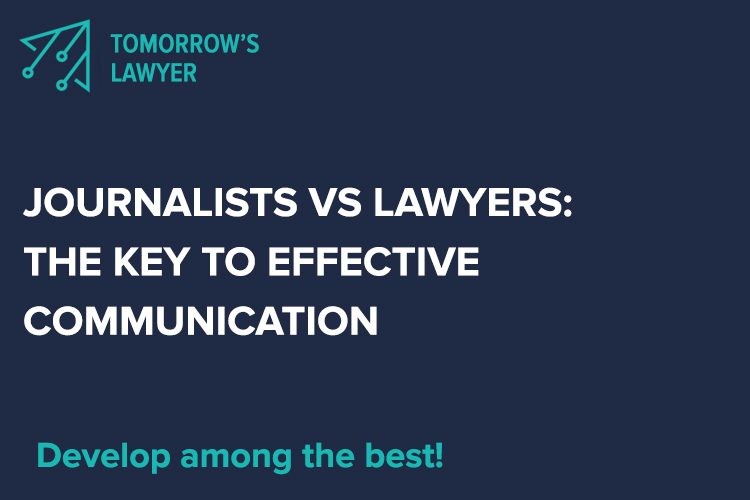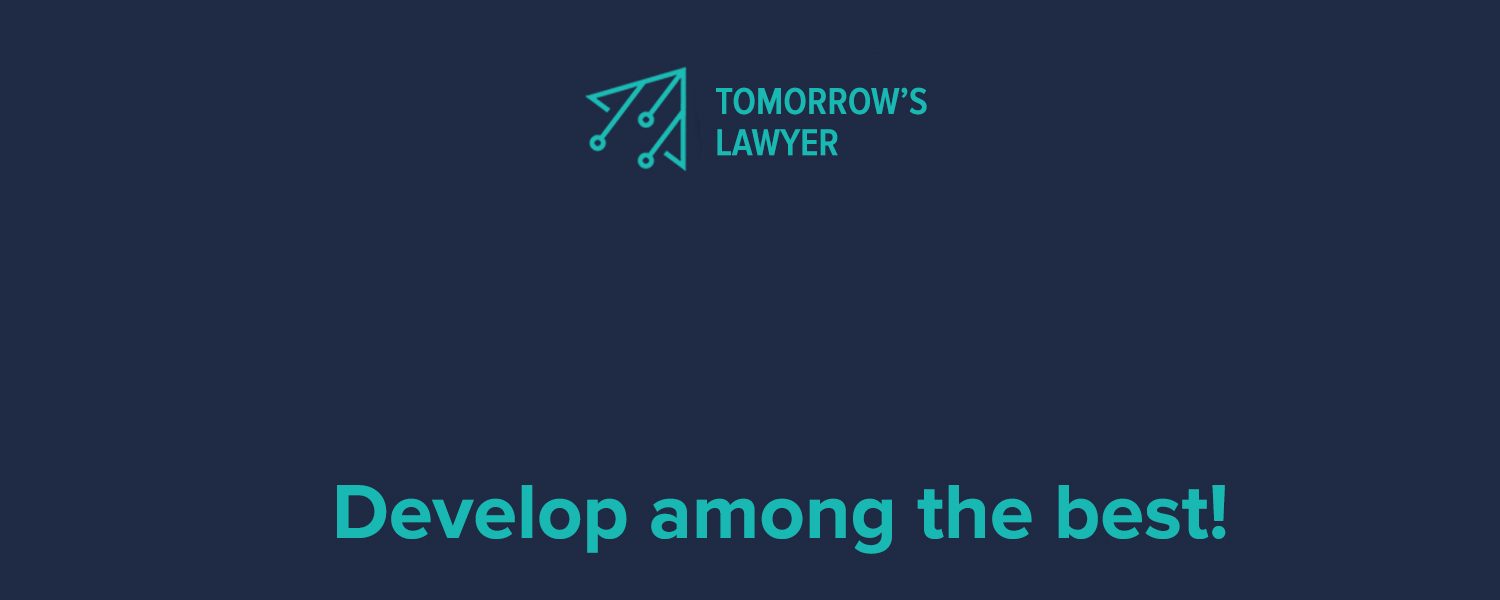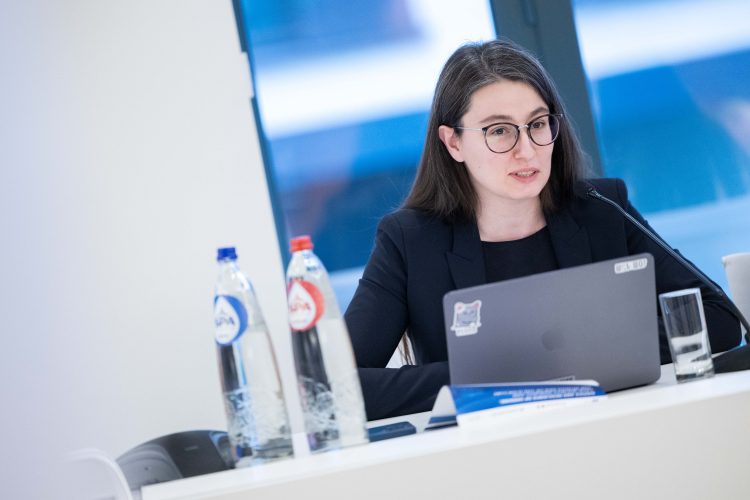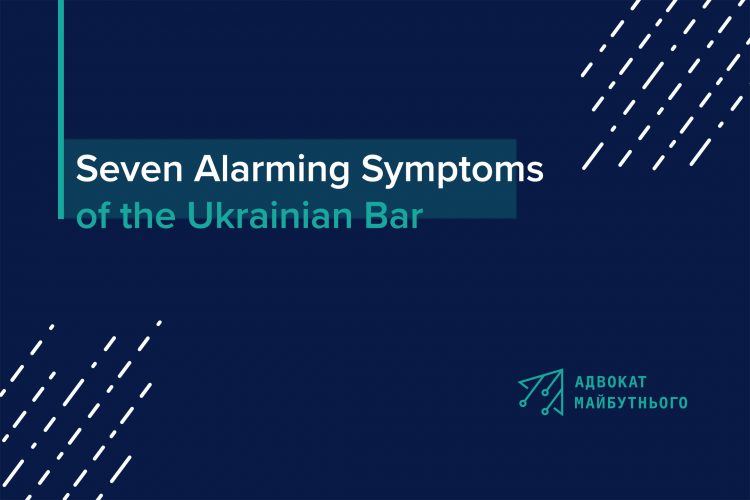


Program Manager: How Journalists and Lawyers Can Shift Conversations for Good for the Society
Within the framework of the forth module of the “Tomorrow’s Lawyer” Program, dedicated to mass media relations and communications, trainers Larysa Denysenko and Tetyana Troshchyna developed and conducted a survey among journalists and lawyers on their communication and interaction. Program Manager Daria Pysarenko summed up the results of this study and tried to find out what was the key to understanding lawyers and journalists.
– You are corrupt!
– No! This is you who protect scums!
What is the problem of communication between journalists and lawyers?
The society has always had, has and will have the need for information. The technologies of the XXI century have greatly simplified access to it, and its volume which gets through to the consumer, is increasing on a daily basis. The world has entered a new level of mass communication related to the dissemination of socially meaningful information. Often, the very appropriate level of communication allows you to achieve the best results.
According to a nationwide survey of the Kyiv International Institute of Sociology on the public trust in social institutions and groups, 32% of Ukrainians trust the Ukrainian media. More trusted by Ukrainians only the church, public organizations and the Armed Forces of Ukraine. It should be borne in mind that the main requirements of consumers (42%) to information in the media are fairness and authenticity (data from InMind research commissioned by Internews). The vast majority of Ukrainians receive socially relevant information from the Ukrainian media: television, radio, print and electronic media. That is, the media itself is the main source of information, and therefore, in the formation of public opinion, because information from the media is used as a cognitive resource, shaping the concept of society and its values.
At the final module IV of the “Tomorrow’s Lawyer” Program, participants (lawyers) worked on the topic of media communication, covering the following sub-themes: mutual stereotypes of lawyers and journalists; logic and media needs; ethics of the lawyer and journalist ethics; toxic lexicon in legal communication; the balance between professional vocabulary and accessibility; identification of the lawyer with the client and public perception.
The program organizers conducted a survey among law practitioners and journalists. The purpose of the survey was to investigate the state of communication between lawyers and journalists.
Communication is always a two-way process. Responsibility for its effectiveness and efficiency is borne out by both parties. The communication process is not always effective, because there may be communicating barriers between those who report information and those who perceive it. This may be psychological barriers or barriers to relationships when there is hostility and, as a consequence, there is a distrust of the information that is obtained.
Among the lawyers there is the opinion that journalists “always distort everything”, “lack competency in the issues covered”, “mount interviews altering their content”, “prefer “scandals” and “jeans”. Lawyers are also convinced that the activities of journalists “are aimed at making money by defaming one of the parties (lawyer or court), “in the mass Ukrainian journalism there are no such concepts as objectivity, impartiality and ethics”.
The survey revealed that lawyers paid attention and even expressed concern that journalists lacked a single Code of Ethics that would be mandatory for all industry specialists. Instead, attorneys are forced to adhere to the Lawyers’ Ethics and keep the attorney-client privilege.
Often lawyers noted that journalists distort the information received and lay it out without paying attention to the laws, and also add assumptions to the obtained information that contradict the current legislation.
A particular concern for lawyers is the problem of identifying a lawyer with a client. According to them, “journalists often turn lawyers into monsters and drew parallels between them and their clients”. This gives rise to concerns, as the media functions as a translator of information. It is the identification of a lawyer with a client in the media affects the perception of the Bar and the legal profession as a whole. Some lawyers drew attention to the problem of “misunderstanding of the presumption of innocence by journalists”.
In general, 27% of lawyers who took part in the survey said that they did not trust journalists, 72% said that it depended on the situation, while only 1% confirmed that they trusted journalists. At the same time, a similar question about lawyers, 22% of journalists answered that they trusted lawyers, 71% – depending on the situation, 7% of respondents do not trust lawyers.
According to the survey, journalists trust the lawyers more, because they “understand that they are obliged to protect their client”. However, many journalists said that the information publicly distributed by advocates is aimed, above all, at protecting the client, and therefore may not be fully trusted.
Also, journalists drew attention to the fact that “lawyers of odious persons” are called “dishonest” or “trust depends on who he is protecting”. Actually, this is the problem of identifying a lawyer with a client, as indicated by lawyers.
In addition, journalists have emphasized that lawyers often use journalists’ ignorance of laws to cover the topic solely in their own favor and in the interests of their client, sometimes manipulating facts and breaking the rules of the law from the context.
Who am I to you?
It was important to find out how journalists and lawyers perceive each other (respondents were able to select multiple answers). Interestingly, 45% of journalists consider advocates as their partners, 46% – as intermediaries, and 37% perceive lawyers as those who raise legal awareness in society. Instead, 57% of lawyers perceive journalists as partners, 58% – as instruments for self-promotion, 31% – as truth exposers.
The expectation of lawyers from working with journalists has focused on the following needs: professionalism, impartiality, efficiency, objectivity. Journalists expect lawyers to communicate and provide legal information, communication accessibility, assistance in conducting journalistic investigations, and legal commentary for articles.
What prevents journalists and lawyers from building communicative bridges?
According to journalists, the lack of contacts and the reluctance of lawyers to communicate, a certain closeness of the lawyer’s community, and the biased attitude of lawyers to journalists are hampered by journalists. According to lawyers, communication with journalists is hampered by lack of contacts, negative experience of colleagues, and the desire of journalists to “get out of context” “to make it hot”.
Professional vocabulary or accessibility?
It is important that journalists in the survey paid attention to the “gibberish language” of some representatives of the legal profession. Choosing a balance between professional and accessible vocabulary is one of the most important aspects of communication between lawyers and journalists. After all, lawyers often do not take into account the lack of knowledge of legal terminology not only for journalists, but also for readers (listeners). Often, this prevents an attorney from communicating the key message to an average representative of the audience and engage a journalist in further cooperation.
During the module IV training, coach Tetyana Troshchyna advised lawyers to communicate with journalists to try to explain to an 8-year-old child the situation that is being prepared for coverage. Only in this case can you be sure that the main audience will understand the key message.
Summing up, it is safe to say that both parties are not satisfied with the present state of communication. After all, communication is a two-way road. However, communication between journalists and lawyers can turn into synergy. If you are able to use the tools available on both sides, such as the impact of public opinion (for journalists) and knowledge in the field of law (for lawyers), as a result, you can raise the level of legal awareness of Ukrainians, improve the law-enforcement function and facilitate the adherence of rights and freedoms in the country.
Comments
Larysa Denysenko, trainer of the “Tomorrow’s Lawyer” Program, human rights activist, lawyer, media person, writer:
“Due to inability to express oneself, excessive terminology, toxic communication, the interaction between lawyers and journalists turns into a children’s game “spoiled phone” when someone first whispers a word or phrase to another persons, the latter passes it forward in the same way and finally the last player in a chain pronounces a result which is usually substantially different from the initial message.
Do not forget that one way or another, through journalists, lawyers communicate with people. Do not skip the key message of your speech. Be sincere, interesting, understandable, clear, logical, consistent and concise. Do not waffle, do not hop about. Respond from life stories and examples. Leave the terminology in the Codes, feel yourself a peculiar translator from the language of laws into common language. The equilibrium point for your linguistic feuettes is an ordinary person who has not been subject to legal professional deformation, politicized and mistrustful. Try to imagine and respect such person”.
Tetyana Troshchyna, trainer of the “Tomorrow’s Lawyer” Program, radio presenter and member of the editorial board of the Hromadske Radio:
“Quite often, being overwhelmed by words, we forget why we’ve started the conversation. I love the quote of the famous German philosopher Niclas Luman: “Communication is a reduction of uncertainty”. These words very precisely convey the essence of communication aimed at the audience. We are not talking for the sake of the process, but to be heard and hear the other. Lawyers address their clients. Journalists have their own clients – the audience. If you bear in mind this simple truth, it will be easier for you to work with the media. You just have to think about where the interests of these clients can cross. Lawyers are very important law enforcement agents. This important task is assisted by knowledge of the mechanisms of effective communication, trust and mutual respect. ”
The article was first published in the “Yuridicheskaya Gazeta” Weekly.
The opinions expressed in this article are the author’s own and do not reflect the view of the “Tomorrow’s Lawyer” Program, the Ukrainian Bar Association, the Bar Association of Legal Aid Providers, the Quality and Accessible Legal Aid in Ukraine Project, the Canadian Bureau for International Education, or the Government of Canada and the Law Enforcement Section of the United States Embassy in Ukraine.
About the Program
“Tomorrow’s Lawyer” is the first all-Ukrainian professional development program for lawyers aimed at strengthening soft skills. It was prepared by Canadian lawyers and adapted by Ukrainian experts.
The second round of the Program has already begun. During 2018, another 100 participants will pass through 4 training modules dedicated to the following topics: “Attorney-client relations”, “Building collegial relations in justice system”, “Communication within the legal society”, “Public relations and media”.
The Program was developed during 2016-2017 with the support of The Quality and Accessible Legal Aid Project with an expert contribution from the Canadian Bar Association. In 2018, the “Tomorrow’s Lawyer” Program is being implemented by the Ukrainian Bar Association and the Bar Association of Legal Aid Providers, with the support of the United States Embassy and The Quality and Accessible Legal Aid in Ukraine Project funded by the Government of Canada and implemented by the Canadian Bureau for International Education (CBIE).


